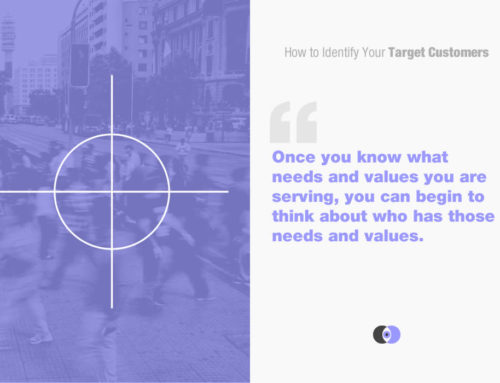
Where are you on this map? Photo credit
The following are 7 essential online marketing strategies that can be leveraged to immediately help increase your visibility on the web.
1. Engage social communities and major players via Facebook, Google+, Twitter, Instagram, Linkedin, Youtube, Pinterest, Quora, and whatever else is relevant to your industry.
Community engagement is the heart of success online. Fundamentally, community engagement means 1) seeking out communities of people online who share your interests in a general sense (whether they agree or disagree with you) and/or to whom your product provides a solution, and 2) interacting with them in such a way that you provide value to them in some way, usually sharing useful /interesting information or providing and use/interesting product or service. Examples of this include actively curating or contributing to discussions on Facebook and Google+ pages for relevant topics/entities; following and tweeting to relevant and popular hashtags on Twitter; curating community boards on Pinterest. The benefit of this activity is that it draws attention to you as an entity that provides high quality content, which improves your reputation, raises your visibility, and increases instances of being shared, which produces a feedback loop.
2. Optimize website using “On-page SEO”
“On-page-seo” essentially means applying a series of technical treatments to the content hosted on a site in order to improve its indexability by search engines. The parameters of what constitutes good on-page-seo change frequently as search engines like Google and Bing change their indexing algorithms. On-page SEO is very high on the list of what determines being visible in search engines and doing it will promote your appearance in Google searches for keywords and phrases related to our industry and specific UVP.
Examples of this include:
- Write seo friendly copy
- Architecture
- Content organization
- Headings, descriptions, title tags, etc
- Internal links
- Keyword density
- Structured data (schema, open graph, etc)
Read here for an accurate write-up on what constitutes good on-page SEO. And here to learn about “structured data”.
3. Content generation
Example:
- Maintain regularly published and well publicized blog
“Content is king” is a popular mantra. Google exists to serve content to people looking for it. They are smart, so the better the information, the more they are going to serve it. But beyond this, it is the case that if there is more information, then there is more information for them to serve. This applies moreover to internet users generally. They aren’t going to share something more than once, but they will share new content from the same source continually. The cycle here works like this: produce more information > get shared more > make more impressions > get more conversions. The best venue for content production or curation for most institutions is a blog, or more than once blog in different niches.
Read here for Problogger’s take on how to create good content.
4. Design website for more conversions
“Web design” is important. It conveys the level of legitimacy and professionalism, mood and personality, and overall “feel” of an institution. Even more importantly than this, it’s what makes the information on a site accessible, as in findable, readable, appealing, sharable, and otherwise actionable. Designing your website to be more consistent with best practices for your industry and UVP promotes: better comprehension of your unique value proposition; better conveyance of your personality; more interaction with your content; more conversions.
Read here to start learning about what makes web design “good”. Understanding conversion funnels is essential for knowing how best to design your site.
5. Build and maintain an email newsletter list, and send out unique and interesting content
Examples include:
- Original content
- Blog digests
- News and announcements
Email lists are important because they constitute one of the highest quality connections you can have on the internet. Facebook likes, for example, are low quality. They aren’t hard to acquire and they don’t net much value – you haven’t really captured someone’s attention when they like you on Facebook. It is too noisy, too low-commitment, and ultimately a third party owns your relationship to the customer. That is, Facebook can limit the number of people you posts are shared with, or delete your account at any time. Similar limitations exist in varying degrees on other social networks a this time. Email, on the other hand, represents a more direct link between you and your customer. It is less easily acquired, but also less easily dissolved, less noisy, and more within your control. Actively build one or more email list, providing unique, high quality content through this venue. This will allow you to advertise yourself directly to demonstrably interested parties when you see fit.
Learn more about how to craft a good email marketing strategy here.
6. Promote, monitor, and respond to ratings and reviews sites
By this I mean encouraging people to rate and review your product or service across the range of sites offering review ratings and reviews services (Yelp, etc), as well as monitoring them and responding appropriately to any positive or negative reviews when possible. Additionally, it provides the opportunity to accept the feedback provided and act upon it. The benefit of this is basically the oppertunity to track and influence your reputation online, with the added benefit of exposing yourself to feedback along the way.
7. Analyse metrics to refine strategy
Finally, social media marketing is not a one-off deal. It is a constantly evolving interaction with the community of the internet, which has to be sustained and cultivated on an ongoing basis in order to be effective. Moreover, it is not possible to to get it right “the first time around”. Strategies have to be analyzed and refined over time, so that feedback can be accepted and changes can be made for you to be more effective, or indeed effective at all. Regularly and formally analyze the performance of your website and social presence using tools like Google Analytics in order to hone your ongoing activity in this area.





